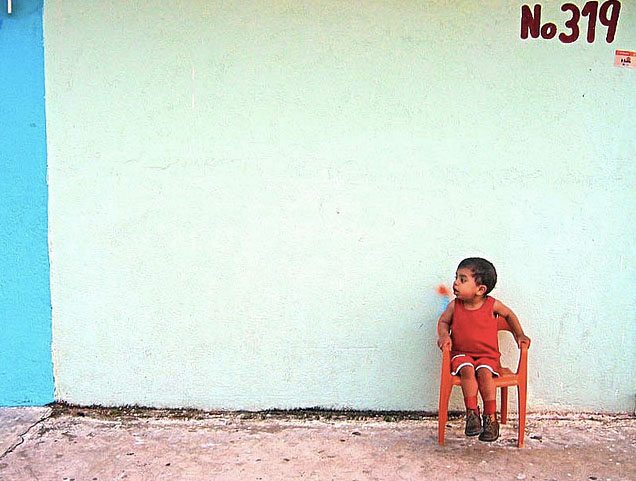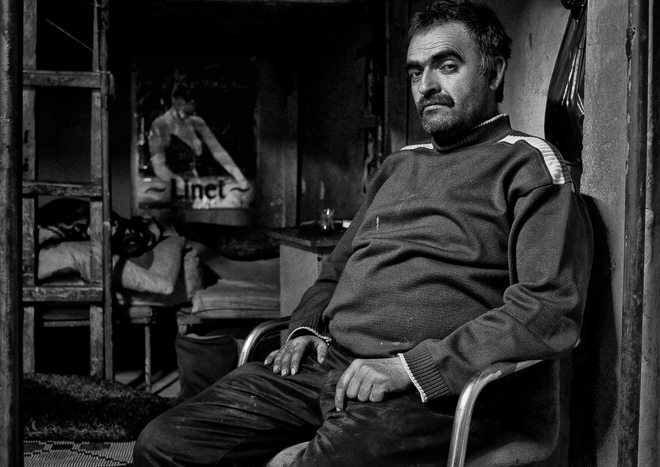Anahita Avalos was born in Tehran, and has lived in Mexico and Paris. In Mexico she began to take pictures on a regular basis in order to explore her own identity as a Middle Eastern woman who grew up in Europe and mom to a child with a rare condition. By observing and trying to understand strangers, she tries to discover herself.
-
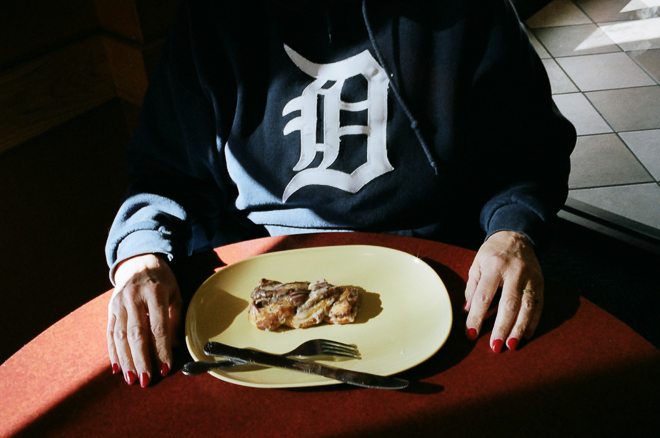
On Expectations and Street Photography

East Lansing, 2013 Photos in this article are from my time in Michigan in 2013.
In life I have a certain strategy: I set very low (or no) expectations for myself and try my personal best.
I know often people say you should always set your ambitions and expectations high– but I find several faults with this strategy:
-

On Consistency and Street Photography

Lansing, Michigan 2013 Photos in this article are from my on-going “Suits” project.
One of the things I notice a lot at my workshops and when I see work online is how there tends to be a lack of consistency in people’s images.
I think while it is great to experiment and try out new things– at the end of the day to create a personal style and vision– you need a sense of consistency.
-

40 Street Photography Resolutions Ideas for 2014

San Francisco, 2013 Now that the new year is under way, I thought it would be a good idea that we could all choose a new year’s resolution in street photography.
I know how difficult it is to keep to a new year’s resolution, but I think it is something fun that we can all look forward to. I just came up with some ideas that we could try experimenting or doing for 2014. Feel free to pick and choose what appeals to you:
-

10 of My Street Photography Resolutions for 2015

Self-portrait of myself from my “Grandfather” series. Busan, 2013 It is that time of the year again— to make resolutions for the new year.
In 2014, I wrote a post, “40 Street Photography Resolutions Ideas for 2014†and I also wrote a post titled: “15 Street Photography Assignments to Re-Energize and Re-Inspire You†(inspired by the book: “The Photographer’s Playbook: 307 Assignments and Ideasâ€).
Below are some personal new years’ resolutions I am going to make for myself in 2015. I will probably break some of them, but will try my best to stick to them. This is advice I will give to myself— and feel free to pick any of these ideas for yourself (or modify them as you see fit). This list is inspired mostly by Nassim Taleb’s New Years Resolutions for 2015.
Here is my personal street photography resolutions for 2015:
- Don’t buy any photo books I don’t plan on re-reading.
-
Buy at least 1 photo book a month (and get to really know it).
-
Give at least 1 in-depth comment/feedback/critique (once a week) to a street photographer who doesn’t get any favorites, comments, or feedback on his/her photos.
-
Try to meet a lonely photographer once a month for a coffee (with no expectation of “networking†or “gain†on my end)
-
Don’t go a single day without taking a photograph (smartphone is fine).
-
Don’t own more than 1 type of camera (only own 1 35mm camera, 1 medium-format, 1 digital). If I accrue more than one of each type of camera, either give away to friend or sell. Don’t accept any free cameras (that I wouldn’t buy with my own money).
-
Walk for at least 15 minutes everyday to make photos (I’m becoming a fat and lazy car-dependent American).
-
Focus on education and creating value (not money, fame, or external recognition). Engaging the street photography community more and always try to help.
-
Make my photographs more personal.
-
Have at least 1 exhibition of my photos (and also curate at least 1 group exhibition). Teach at least 1 free workshop for charity.
What are some New Years’ Resolutions that you have for yourself when it comes to your photography? Share them in the comments below!
-
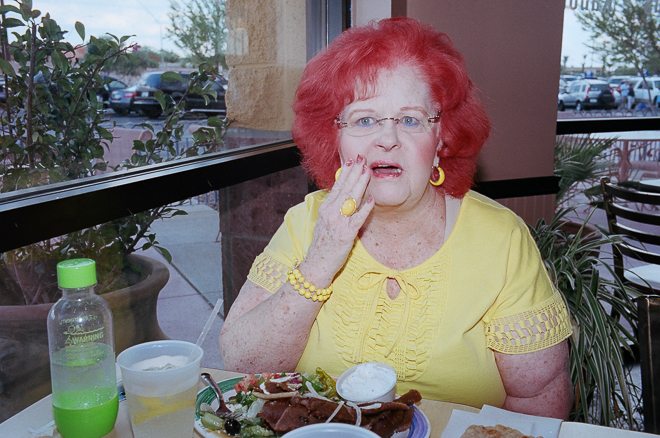
My Top 10 Street Photography Lists for 2013

Pittsburgh, 2013 I have never been the type of person to reflect on life. I generally tend to always live in the present moment– and don’t spend too much time thinking about the past or the future. But the quote that always comes to me from Socrates is: “The life unexamined is not a life worth living.”
Ever since I got laid off my job (June 13, 2011)
life has been zooming past before my eyes ridiculously quickly. It has been around 2 years and 6 months since I have been doing street photography “full time.” and wanted to use this opportunity to just share some of my thoughts and what I am grateful for. -
Don’t Miss Out! One Week Left for Early-Bird Pricing of my Seattle 3-day Introduction to Street Photography Workshop (Jan 10-12, 2014)
There is one-week left for the early-bird discount (Sunday, Jan 5th)Â for my first Seattle Introduction to Street Photography Workshop! Don’t miss out on this beautiful unique location, especially if you live in the area!Â
Have you ever walked on the streets and saw a moment that you wanted to capture, but you were too scared to take the photograph? Do you want to become more confident shooting in the streets and learn how to better interact with your subjects? Do you want to meet other street photographers that are as equally passionate about street photography or interested in learning like you?
-
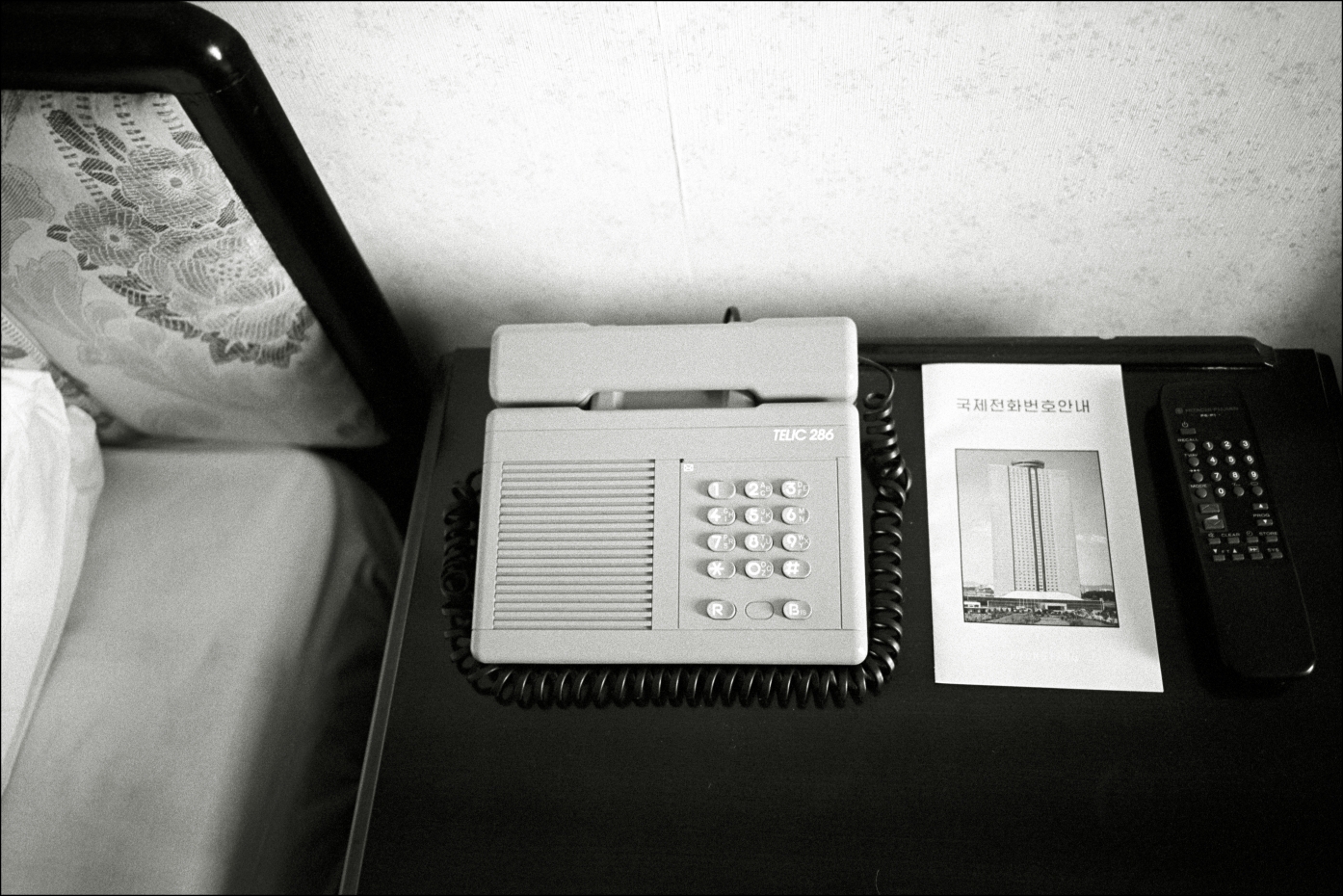
“Kimology”: Exploring the Sanctioned North Korea by Steve Richmond
Steve Richmond is a London based photographer, originally from Northern Ireland. You can see the full “Kimology” series on Flickr here.
-

Embracing Surrealism and Symbolism: Video Interview with Dimitris Makrygiannakis in Stockholm
Dimitris Makrygiannakis is one of the up-and-coming rising stars when it comes to street photography. He has only been shooting seriously the last two years, and has made a huge leap in his work. I love the sense of surrealism, symbolism, and emotion in his work. He also breaks the “street photography” boundaries by embracing multiple types of work: posed portraiture and “still life” work.
See more of Dimitris’ work on Flickr. You can also see my past feature with his work here. Read more to see the entire transcript.
-
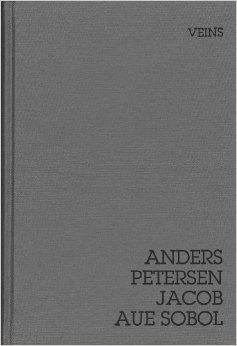
11 Lessons Jacob Aue Sobol Has Taught Me About Street Photography

© Jacob Aue Sobol / Magnum Photos “The most difficult thing for me is to take pictures from far away.” – Jacob Aue Sobol
Jacob Aue Sobol is one of my favorite contemporary photographers. Not only are his images visually powerful and stirring– but they exude a sense of emotion that pours from the seams. His emotions have depth and soul to them– something that we all as street photographers can learn from him.
While Sobol wouldn’t call himself a “street photographer”–his way of wandering the streets and photographing strangers is something street photographers can all relate to.
I recently received a copy of “Veins”
a book he co-authored by Anders Petersen and have been thinking more about Sobol’s work. Therefore I wanted to write this article to better get inside the mind of Soboland share his inspirational images and thoughts about photography to you.Warning: Some of the photos in this article may not be safe for work.
-
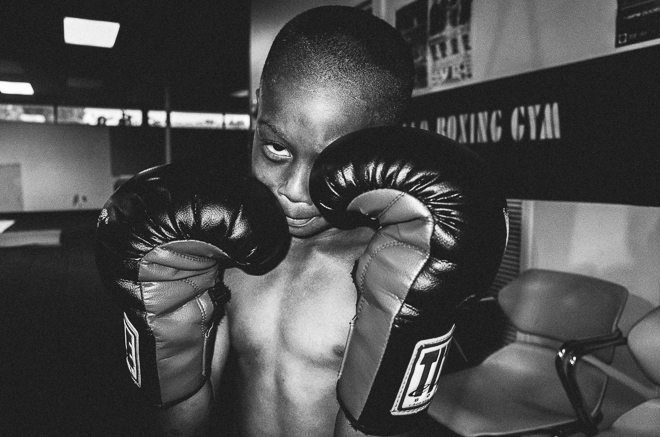
On Criticism and Street Photography

Photos in this article are from my Gallo Boxing Series in Michigan. You can see all the GoPro POV videos on YouTube here.“To try to please everybody is to please nobody” – Publilius Syrus
For those of you who follow my blog (or even worse, my YouTube channel) know that I have a lot of critics. Many people often ask how I deal with the criticism. I’ve had some people tell me that I must have a thick skin, and commend me for it.
However in reality, I actually have very thin skin, and when people do criticize me, it hurts me a lot.
-
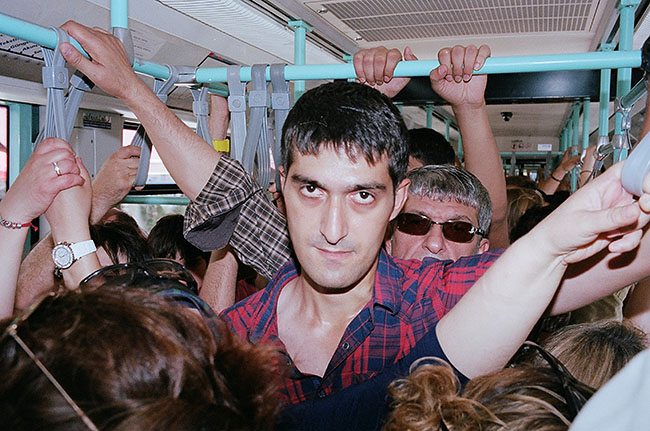
Conquer Your Fears and Meet New Peers in 2014! Upcoming Street Photography Workshops in Seattle, SF, Amsterdam, NYC, Istanbul, Toronto, LA, Vancouver and More!
Hey streettogs,
I am excited to announce my new calendar of street photography workshops for 2014 in Seattle, SF, Amsterdam, NYC, Istanbul, Toronto, Vancouver, Vietnam, Seoul, Tokyo, Sydney, Melbourne, Stockholm, and London! If you want to meet new peers and conquer your fears, join us at a workshop coming to you below!
If you cannot attend one of my upcoming in-person street photography workshops yet want to learn from the comfort of your home, you can also join me for one of my special Online 1:1 Street Photography Workshops via Skype.
Join over 500+ students for an experience you will never forget! Read more to see my full schedule below!
Street Photography Workshops 2014
January 10-12th
Seattle – Introduction to Street Photography Workshop – OPEN!
February 1st
San Francisco - Introduction to Social Media for Photographers Workshop – Info TBA
February 7-9th
San Francisco – Introduction to Street Photography Workshop – OPEN!
February 28-March 3rd
Amsterdam – Introduction to Street Photography Workshop -Â OPEN!
March 7-14th
Dubai – Gulf Photo Plus Workshops (Intro, Intermediate/Adv, Urban Landscape) – OPEN!
March 28th-30th
New York City – Introduction to Street Photography Workshop -Â OPEN!
April 4-6th
New York City – Intermediate/Advanced Street Photography Workshop –OPEN!
April 21-25thÂ
Istanbul - Week-Long Travel Street Photography Workshop with Charlie Kirk – Register Intent
May 2-4th
Toronto – Introduction to Street Photography Workshop -Â OPEN!
May 16-18th
Los Angeles - Introduction to Street Photography Workshop - OPEN!
May 23-25th
Los Angeles – Intermediate/Advanced Street Photography Workshop -Â OPEN!
June 6-8th
Vancouver (BC)Â – Introduction to Street Photography Workshop -Â OPEN!
June 30-July 4th
Vietnam (Ho Chi Minh City) – Week-Long Travel Street Photography Workshop – Register Intent
July 25-27th
Seoul - Introduction to Street Photography Workshop - Register Intent
August 15-17th
Tokyo - Introduction to Street Photography Workshop - Register Intent
August 22-24th
Hong Kong – Intermediate/Advanced Street Photography Workshop - Register Intent
August 29-31st
Sydney - Introduction to Street Photography Workshop – Register Intent
September 5-7th
Melbourne - Intermediate/Advanced to Street Photography Workshop – Register Intent
November 7-9th
London - Introduction to Street Photography Workshop - Register Intent
November 14-16th
London - Intermediate/Advanced Street Photography Workshop - Register Intent
December 15-19th
Bangkok - Week-Long Travel Street Photography Workshop - Register Intent
For more information, check out my Eric Kim Street Photography Workshops page. If you have any questions, email my manager Neil Ta at neil.ta@erickimphotography.com
-

On Neomania and Street Photography

Detroit, 2013 I hate advertising in a lot of ways. Although I think there are some beautiful advertisements (that I think can double as art)
at the end of they day, they are just trying to get you to buy something. And with that– advertisers and marketers often create false wants (which we get confused with “needs”). For example, I “need” a new iPad Air, rather than I “want” a new iPad Air.Not only that, but one of the great psychological tricks that advertisers/marketers use is to create a sense of dissatisfaction with what you already own. Sure, you already have the iPhone 5, but you suddenly feel that you are missing out by not having the iPhone 5S (it has a marginally better camera!)
-

Capturing Harmony on the Streets through Graphical Images: Interview with Siegfried Hansen
Eric’s Note: This is an interview with Siegfried Hansen, one of the finest contemporary street photographers who hails from Hamburg, Germany. What I love about his work is how he is able to combine strong graphical elements in the streets – and make simple yet beautiful images. See his fine images and advice for street photographers in this interview below.
-

Street Photography Composition Lesson #13: Multiple-Subjects

© Garry Winogrand I think one of the most difficult compositional techniques in street photography is to incorporate multiple subjects in the frame — without it becoming too cluttered or overwhelming. Generally the problem is that most photographers that try to incorporate multiple subjects have some of the following problems:
- Overlapping subjects
- Distracting backgrounds
- No central subject
- Not enough points of interest
In this article I will share some of who I think are the finest photographers to have used multiple-subjects in their photos. I will analyze the images, and hopefully provide practical tips to anyone trying to incorporate more multiple subjects in the frame.
-

25 Practical Tips from Elliott Erwitt for Street Photographers

© Elliott Erwitt / Magnum Photos I recently attended Elliot Erwitt’s “100+1” exhibition at Fotografiska, which will be in Stockholm from December 6, 2013 to March 2, 2014. We were given a brochure with great practical advice for street photographers– which I have shared here. This text for the article is extracted from the foreword dedication written by Elliott Erwitt for the book “Personal Exposures.”
-

In Praise of Slowness in Street Photography

Tucson, Arizona. 2013 Photos in this article are from my road trip from Michigan to California.
One thing I hate about the modern world is our addiction to speed. We want everything to be done faster, more efficiently, and better optimized. We are frustrated when we are loading up a website on our smartphones and it takes longer than a few seconds. We hardly have the patience to cook anymore, so we just pop something in the microwave. We then inhale our food in a few seconds so we can get back to work and be more “productive.”
-
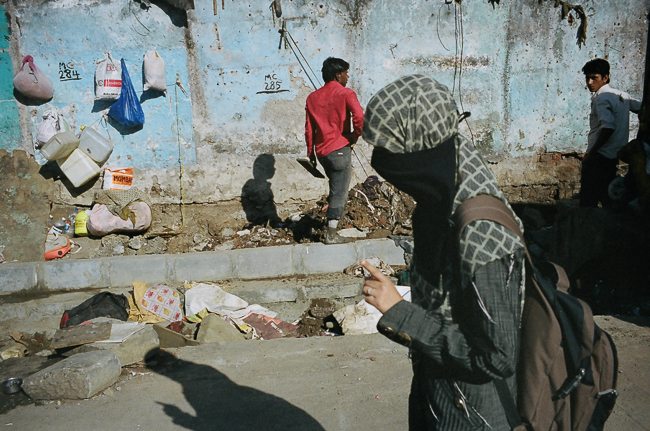
5 Psychological Biases You Must Avoid in Street Photography

Mumbai, 2013 Besides street photography, I have a great interest in sociology, psychology, and philosophy. What I love about all these side-fields is that they overlap and add unto one another. Not only that, but I have probably learned more about street photography from these outside fields than from the field of photography itself.
A field I have been quite fascinated with is called “behavioral economics”
the idea that us humans act “predictably irrational”. This means that we all have similar cognitive biases in certain circumstances. Although we like to think of ourselves as rational beings– we are far less rational than we’d like to believe.In this article I want to share some insights I have learned from “behavioral economics” (which tends to fit into the field of psychology and cognitive science).
-
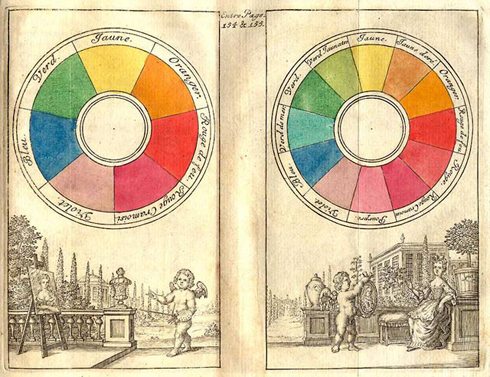
Street Photography Composition Lesson #12: Color Theory

Eric Kim, Downtown LA 2012. For today’s compositional lesson– I want to talk about color theory— and how you can better utilize colors when it comes to your street photography.
Personally around 2 years ago, I made the switch from shooting fully black and white — to just shooting color film (Kodak Portra 400).
Since then, I have learned to see the world in a totally different way. It has been fun, refreshing, and quite exciting.
However at the same time– shooting in color presented a new bag of worms. Whereas black and white tended to simplify a scene, color could be distracting and take away from a photo (if the colors didn’t add meaning and value).
So for this lesson we will talk about some color theory — in terms of how we can make colors better work for us. I am certainly not an expert when it comes to working in color, but I will try to share some practical tips of how you can better shoot street photography in color.
-

“SEVENTY”: A Book of Images of Mystery, Surprise, and Humor in Jack Simon’s Everyday Life

My good friend and talented street photographer Jack Simon (from Burn My Eye) has recently turned 70 years old (he looks about 2 decades younger than he is). In honor of his birthday, he recently published a new book titled: SEVENTY — which is a compilation of 70 great candid photos. He was also generous enough to offer the book free via ebook. More info about the book below from Jack:
SEVENTY is a compilation of 70 unplanned and unposed images. I enjoy the hunt for that moment of mystery, surprise, and humor in my everyday life. I seek images that hint to a larger story, like a publicity still from some forgotten movie. These fragments of fictional stories are drawn from the real world in an odd coupling of my unconscious, my intentions, and chance. As I turn 70, I celebrate these accidental glimpses into other worlds and untold stories that inhabit my surroundings.
If you want to learn more about Jack Simon and his work, you can see this in-depth interview I did with him here.
Jack Simon Shooting the Streets of SF
Below is a fun video I made with Jack shooting in the Mission District of SF:
SEVENTY by Jack Simon
Follow Jack
Wish Jack a happy birthday by leaving a comment below! :)
-
Watch “Everybody Streetâ€: A Documentary on the Lives and Work of New York’s Iconic Street Photographers
If you haven’t heard yet the new street photography documentary: “Everybody Street” is now available to watch via Vimeo on demand. You can either rent the film for $4.99, or buy the film via digital download for $12.99. The film is 101 minutes long, and definitely worth the watch if you are passionate about street photography. More info about the film below:
“Everybody Street†illuminates the lives and work of New York’s iconic street photographers and the incomparable city that has inspired them for decades. The documentary pays tribute to the spirit of street photography through a cinematic exploration of New York City, and captures the visceral rush, singular perseverance and at times immediate danger customary to these artists.
Covering nine decades of street photography, “Everybody Street†explores the careers and influences of many notable photographers––a number of whom have never been documented, featuring: Bruce Davidson, Elliott Erwitt, Jill Freedman, Bruce Gilden, Joel Meyerowitz, Rebecca Lepkoff, Mary Ellen Mark, Jeff Mermelstein, Clayton Patterson, Ricky Powell, Jamel Shabazz, Martha Cooper, and Boogie, with historians Max Kozloff and Luc Sante.
For more info about the film, check out their site:Â everybodystreet.com
-

Street Photography Composition Lesson #11: “Spot the Not”

© Martine Franck / RUSSIA. Moscow. Ballet Moisseev: young dancers rehearsing. March 2000. When it comes to composition– one of the first things you should ask yourself is: “Who is the subject?”
If you have a hard time identifying the main subject (or subjects) in the photo– you are in trouble.
One of the most difficult things to do in street photography is capture multiple subjects well. When there are lots of subjects in our frame, it is often difficult for us to focus on who the main subject is.
So how do we overcome this difficulty? I propose the compositional concept of: “Spot the not.”
-
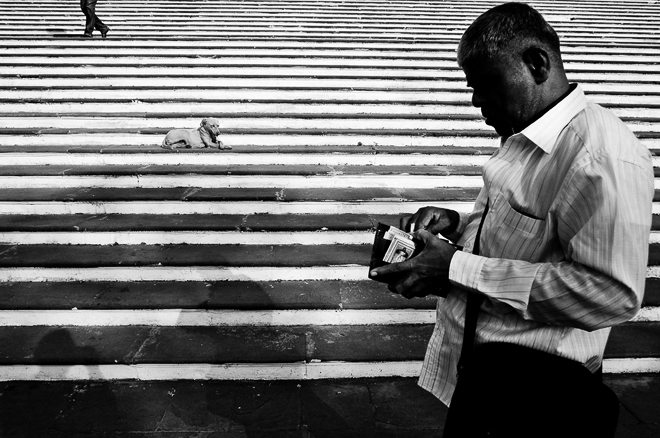
Reading The Visual Layers of New Delhi: Rohit Vohra
Erics Note: Rohit Vohra is a street photographer based in New Delhi, India. In a search for new methods to ‘read the city’, his photographs are often about contact with humans and basic living elements. He is also the Editor in Chief of Art Photo Feature.
Rohit: Street photography is one of the purest forms of photography. Love the challenge it presents, of capturing the unknown. You are out on the road with absolutely no idea of what you are going to come back with. I enjoy street photography because of this uncertainty… the joy of capturing that perfect moment… perfect in terms of light, texture, and elements all perfectly in place. Such a flawless alignment of elements, coming together randomly, to create a perfect moment which is visible for the smallest span of time before it vanishes forever… that is what I enjoy. When I am on the street I like to show my reading or perception of reality.
-

Street Photography Composition Lesson #10: Urban Landscapes

© Robert Frank For today’s lesson I want to talk about “urban landscapes.” Urban landscapes aren’t really compositions in the specific sense (compared to lines, curves, etc)– but I still feel they are relevant when creating our street photographs.
If you guys have read my prior lessons on composition– I have thought a lot about what a “composition” really is. For me at the end of the day– a composition can really be anything. The dictionary’s definition to composition is as follows:
Composition:Â The combining of distinct parts or elements to form a whole.
So when it comes to street photography, whatever elements we capture in the background make an image.
I am not exactly sure what direction these “composition lessons” are heading– but thank you for your support. Let us continue to ride the wave– and see where it follows:
-
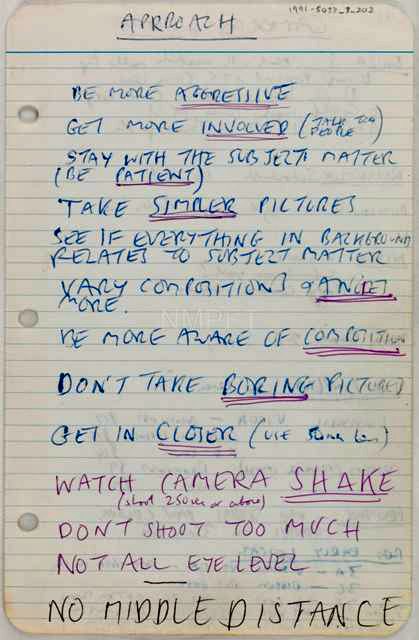
Don’t Take Boring Photos: 13 Tips for Street Photographers from Tony Ray-Jones
In the late 1960’s, photographer Tony Ray-Jones wrote a hand-written note on his “approach” when he took photographs. I think these tips are lessons all of us as street photographers can learn from him. Read more to see some of his inspirational images (and this list typed out):
-

“The 9th Floor”: A Rural Themed Playground for Kids in Urban Korea by Trevor Marczylo
Eric’s Note: This project is by Trevor Marcyzlo, a Canadian street photographer currently based in South Korea. He is a part of the collective STROMA.
Trevor: Located on the 9th floor of Shinsegae Department Store “The 9th Floor” is a rural themed playground for kids in urban city Uijeongbu. Photos June – October 2012.
-
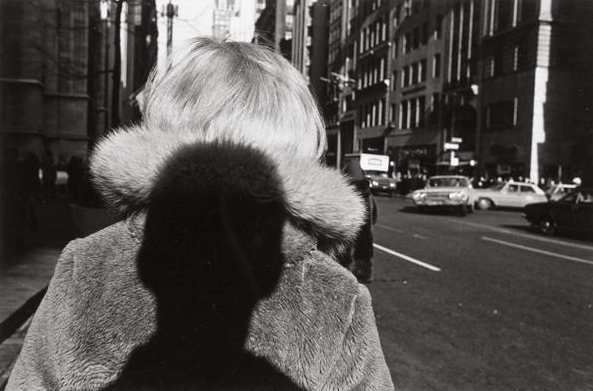
Street Photography Composition Lesson #9: Self-Portraits

© Lee Friedlander. New York City, 1966 “At first, my presence in my photos was fascinating and disturbing. But as time passed and I was more a part of other ideas in my photos, I was able to add a giggle to those feelings.â€
For today’s compositional lesson I want to introduce the idea of incorporating self-portraits into your street photography.
While self-portraits don’t fit into the textbook definition of “composition” per se– I still feel that they are an interesting compositional technique we can add to our toolkit to make more interesting images.
-
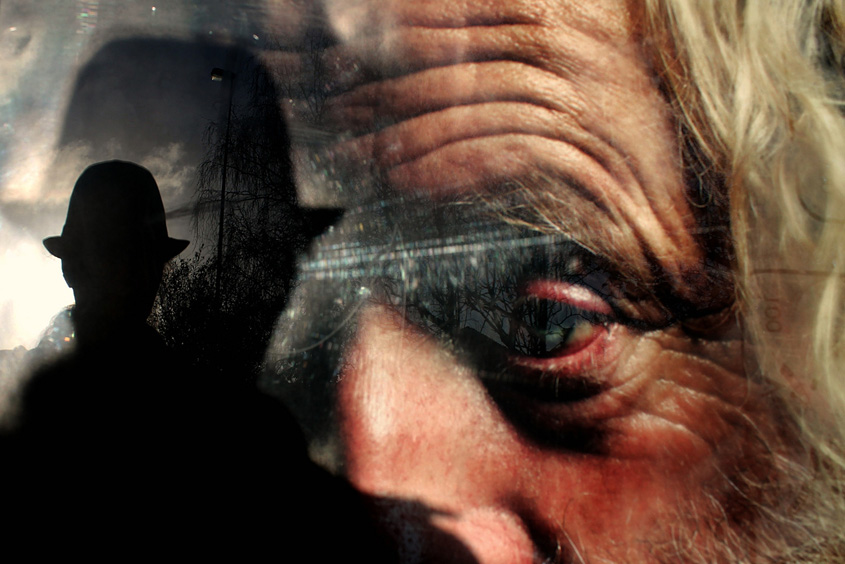
Observe Collective Interview #3: Danielle Houghton
Eric’s Note: ​OBSERVE is a new international photography collective focused primarily on the practice of candid street photography. I have sent questionnaires to all 13 of the members, and will feature their responses and images on the blog for the next upcoming weeks. This week’s feature is Danielle Houghton, based in Dublin, Ireland.
Danielle:Â Picking up a camera in my teens I found myself automatically taking pictures of strangers without really knowing why. After a long break, I now find myself doing the same but this time with a name and understanding of my folly. I like to appreciate the odd in the mundane and find that suburban life can be nicely quirky. In Dublin I often shoot by the coast, in parks or even from the car window. While visually pleasing settings are very important to me the real beauty of photography stems from the uniqueness of people and those moments that cannot be repeated.
-
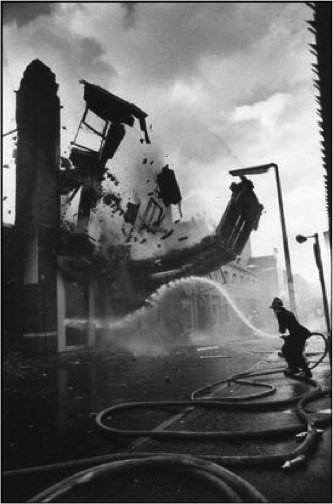
Street Photography Composition Lesson #8: Curves
-
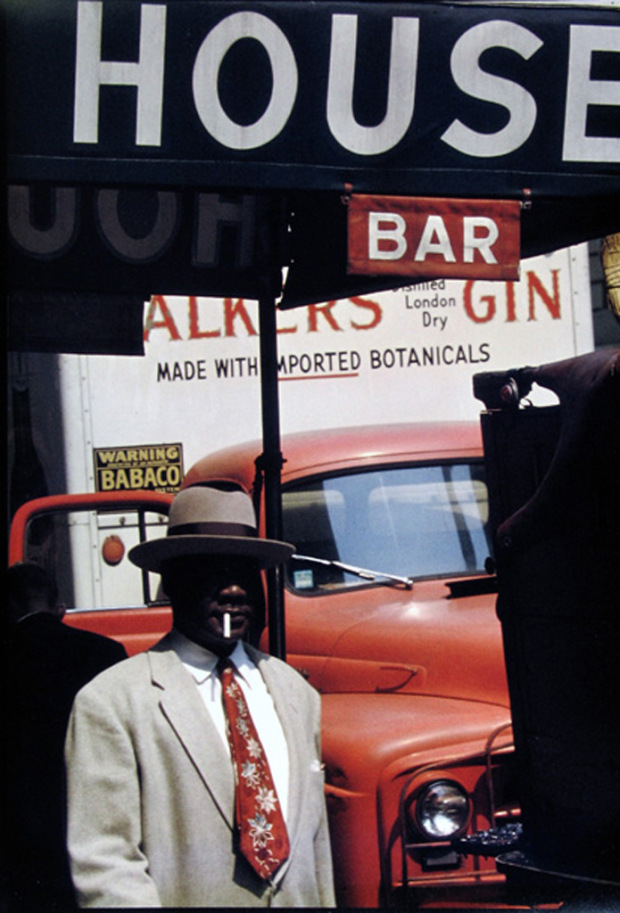
7 Lessons Saul Leiter Has Taught Me About Street Photography

© Saul Leiter I can’t remember the exact moment that I discovered the work of Saul Leiter. I think I remember seeing some link on the internet about the discovery of one of the earliest “pioneers” in color street photography. But upon hearing this, I didn’t dig into it too deeply.
About a year ago when I was in Marseille, I re-discovered Saul’s work through a good friend of mine, Yves Vernin. When I left Marseille back to America, he gave me a beautiful Saul Leiter book. When I flipped through the pages, I was overwhelmed by the beautiful colors, reflections, and abstractions of Leiter. It was unlike any street photography I had seen before. It was much more romantic, poetic, and full of expression.
I then started to research more on Saul Leiter
and have not only appreciated his images, but his philosophy of life. At his late eighties, he is very down-to-earth, and has no interest in legacy or fame. He lived a simple life and even now with his sudden rise in fame, his ego hasn’t inflated one bit.In anticipation for the DVD release of his film “In No Great Hurry”
I wanted to write this article about lessons in street photography (and life) I have learned from Saul Leiter. -
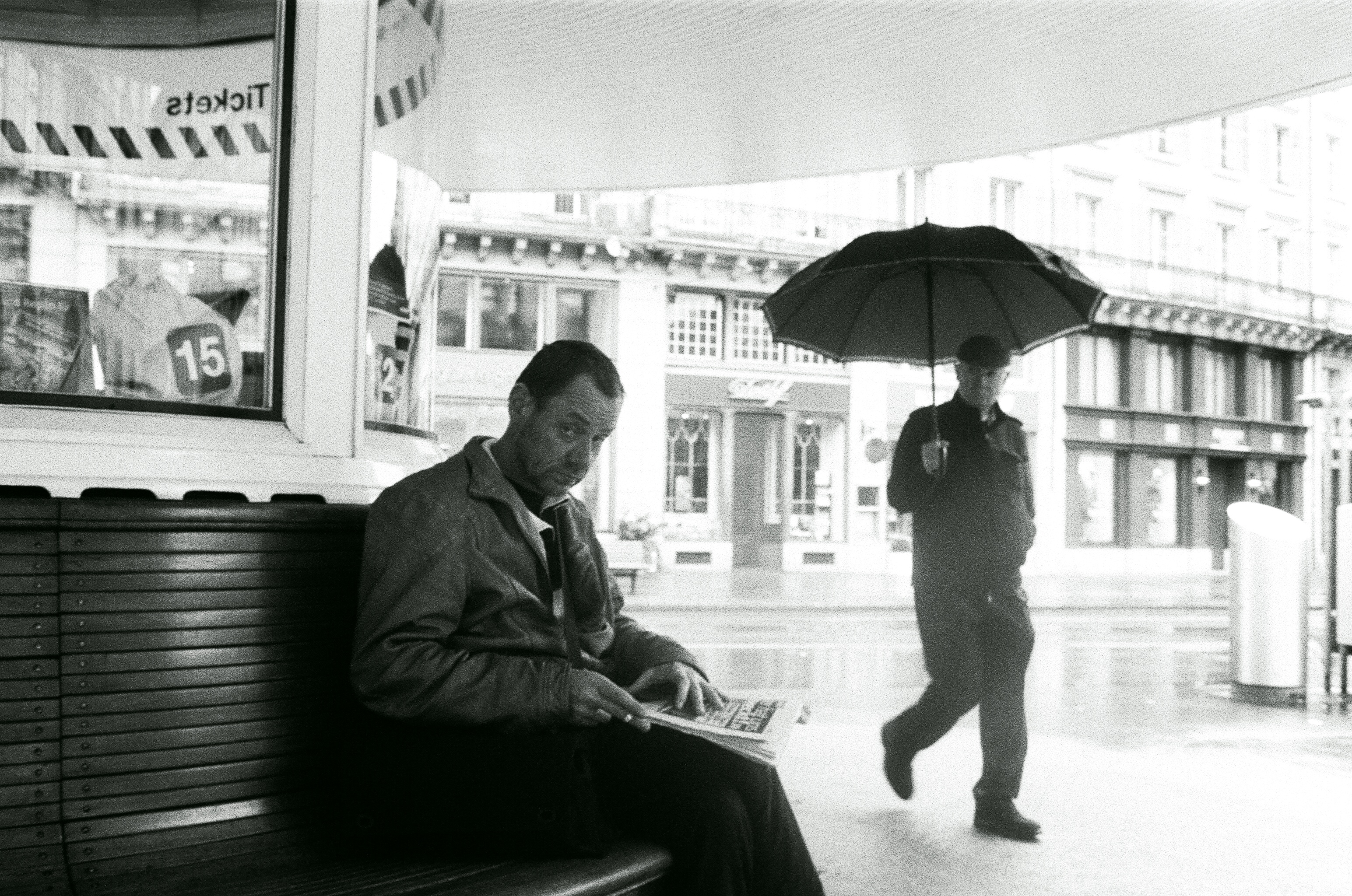
Street Photography Composition Lesson #7: Perspective

© Bruce Gilden / Magnum Photos All photographs in this article are copyrighted by their respective photographers.
For today’s compositional lesson I want to talk about perspective.
Google defines “perspective” as the following:
The art of drawing solid objects on a two-dimensional surface so as to give the right impression of their height, width, depth, and position in relation to each other when viewed from a particular point.
In street photography utilizing unique perspectives or vantage points make images have different impressions and feelings. I often find that street photographers don’t utilize interesting perspectives enough– most photos are just from eye-to-eye level.
To make more edgy and interesting photos, try embracing more unique perspectives (shooting from a really low angle, or getting on top of a roof and shooting from a high vantage point).
I wanted to show some great examples of how some master street photographers used low and high perspectives to make more interesting photographs.
-
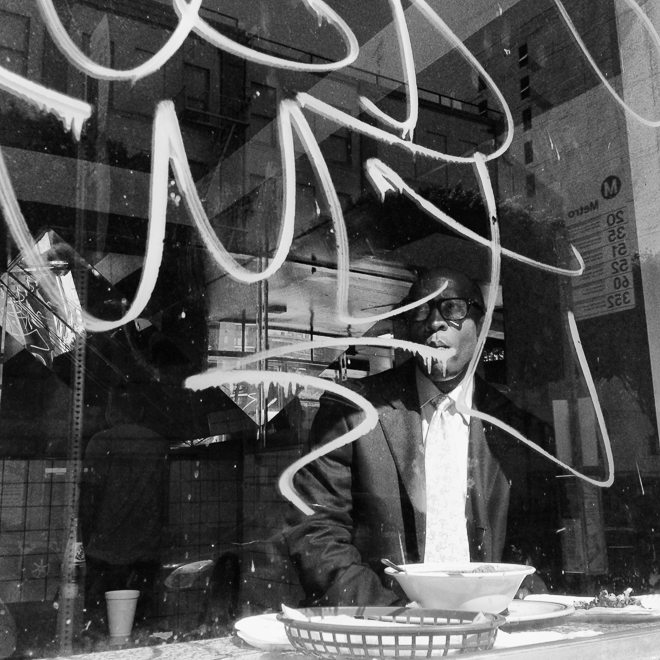
Capturing Proof and Evidence on the Streets of LA: Mehdi Bouqua on Shooting with an iPhone
Eric’s Note: This article is written by Mehdi Bouqua, a street photographer based in LA. He shares his experiences shooting with an iPhone– and the importance of documenting life. Mehdi shares more of his thoughts and images below:
Mehdi: Today’s society is definitely over equipped/ flooded with many different types and genres of technological gadgets for all sort of necessities. Photography has become an essential tool of proof and evidence, showing, duplicating a moment and emotion by capturing the exact frame, reflecting it, and documenting it all at once.
-
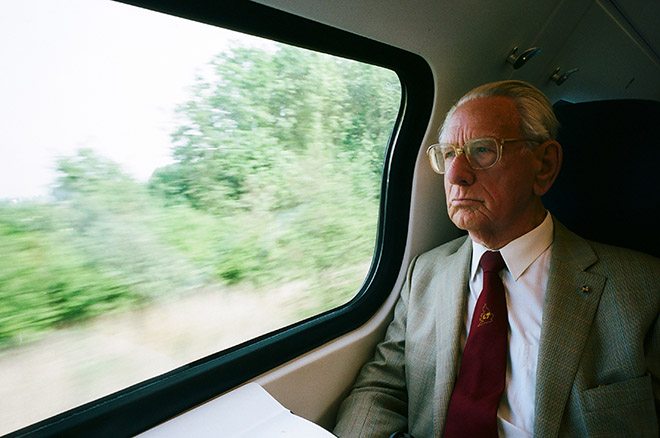
Street Photography Composition Lesson #6: Framing

© Alex Webb / Magnum Photos All photos included in this article are copyrighted by their respective photographers.
For today’s street photography lesson, I want to talk about framing. Framing itself is a pretty basic compositional technique, something I am sure we all learned when we first started. But let us delve deeper into framing. Let us see examples from the masters– and how they framed their images to retain focus, energy, and depth in their images.
-
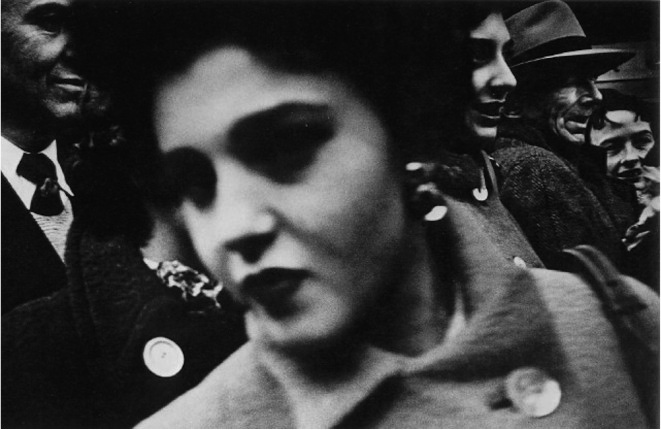
Street Photography Composition Lesson #5: Depth

© William Klein All of the photos in this article are copyrighted by their respective photographers.
For today’s composition lesson I want to focus on a compositional technique that is more utilized by intermediate/advanced photographers. It is the idea of depth.
What exactly is “depth” anyways? Well, the Merrian-Webster dictionary provides this definition (which we generally think of when it comes to spatial relationships):
- a: the perpendicular measurement downward from a surface
- b: the direct linear measurement from front to back
For the purposes of photography and composition, we will use b (the direct linear measurement from front to back).
-

Making a Fiction in the Mind of the Viewer: Interview with Jack Simon
Eric’s Note: This is a full transcript of an interview I did with Jack Simon, a talented street photographer and practicing psychiatrist (over 45 years). I interviewed him at his home, and got to know more about his philosophies and ways of working in the streets. Jack is also member of international candid collective Burn My Eye and based in the Bay Area, California.Â
Listen to the interview
-

Why I Killed Street Photography

Photo by A.G. DeMesa Eric’s Note: This guest article is written by A.G DeMesa— a street photographer based in Manila.
A.G.: What is street photography for me?
Surely it isn’t the mundane. Nothing gets more mundane than a 16 year old’s meal taken over Instagram. It’s not about capturing history or the little human acts because you will just be beaten by the lens of an experienced journalist. How about the perfection of form and the elements like rhythm, texture, layers, lines and others? Well, can’t photography stand on its own two feet and not rely on the concepts of painting?
So I killed my street photography. I murdered it because I became obsessed with making sure everything aligned together. I was mulling over the small details that should be present. I was looking out for the lines that should converge. I had to find the layers that will highlight the human or non human elements. I lost sight of what is important in photography: Seeing. I was doing photography and being a slave to what it means to photograph. There was no flow and joy in it for me anymore.
-
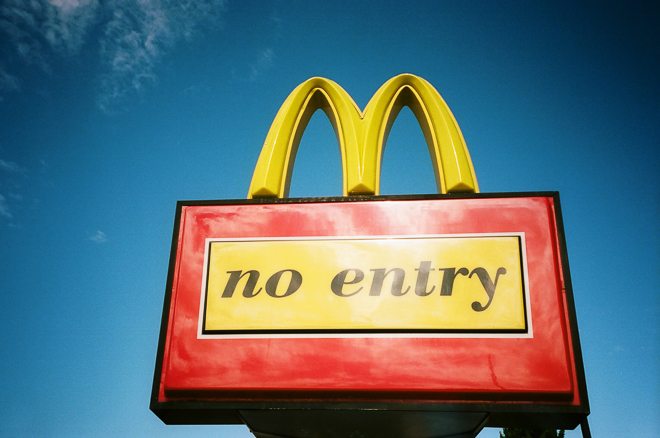
5 Things I Don’t Do in Street Photography

Hong Kong, 2012 Some of the photos included in this post are from my on-going “Colors” project.
I am an ardent believer in the idea of “subtractive knowledge” and “via negative”
meaning that we learn most from learning what not to do. For example, when I played tennis the maxims I was taught by my amazing coach Greg Lowe was the following:- Don’t be tight
- Don’t miss a day of practice
- Don’t try to show off
- Don’t try to muscle your shots
- Don’t worry about losing
- Don’t worry about the racket (tennis players have the worst Gear Acquisition Syndrome [GAS])
Through this negative principle, I was able to excel in tennis– going from not making the tennis team my first year as a freshman in High School, to making the #1 doubles team by my Senior year in Varsity.
I feel that the same can be applied in street photography too.
I know that we all hate being told what not to do. After all, we should do what we enjoy, right?
I totally agree with that mentality as well– but I believe it is restrictions that can help develop our creativity.
-
Intimate Stories and Raw Images: Jacob Aue Sobol Lecture at Nordic Light ICP
Jacob Aue Sobol, Magnum Photographer and one of my favorite black and white photographers, shares his work and insights in this presentation at the Nordic Light ICP. If you are looking for inspiration this weekend, make sure to kick back with a glass of wine and enjoy this video [1 hour 33 minutes long]. You can see more of Jacbob’s photos on his Magnum Photos Portoflio.
-
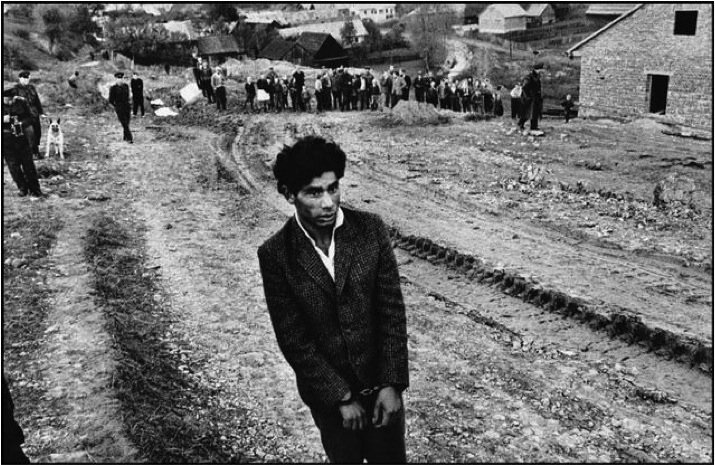
Street Photography Composition Lesson #4: Leading Lines

© Henri Cartier-Bresson / Magnum Photos. FRANCE. 1932. Marseille. The Allée du Prado. All photos in this article are copyrighted by their respective photographers.
For today’s street photography composition lesson– I would like to discuss leading lines.
Leading lines are one of the most basic photography compositional techniques– I am sure you have all heard of it before. But it is a technique that we often don’t listen to or follow. For example, it is easy to have a leading line in the background (for example, a background) that leads your eyes away from the main subject, rather to the main subject.
Whenever I look at a photograph, the first question I ask myself is: who is the subject?
-
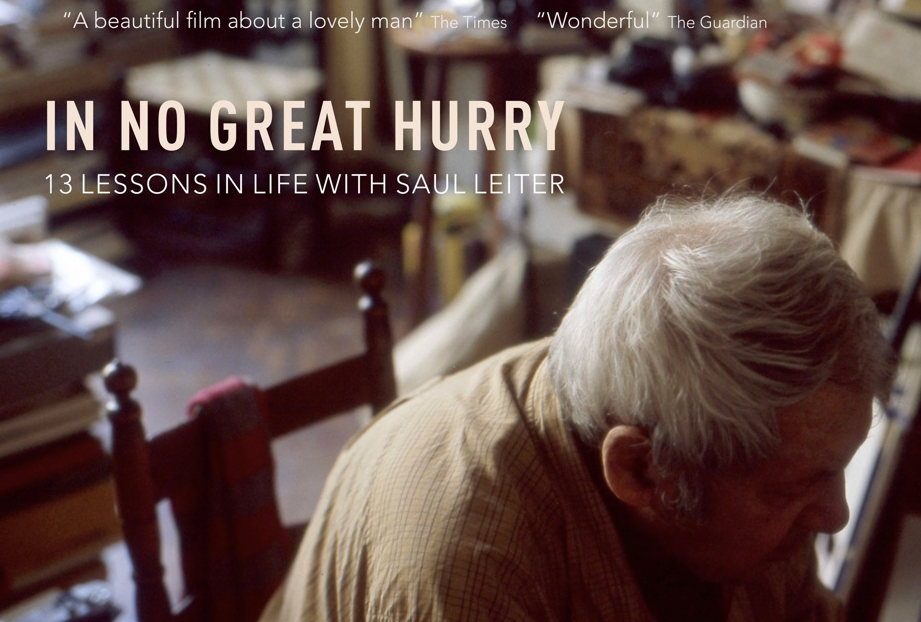
Saul Leiter’s “In No Great Hurry” Film Releasing Nov 16th in NYC!

The team of “In No Great Hurry: 13 Lessons in Life with Saul Leiter” is releasing the film Nov 16th in NYC and releasing a download/DVD at the end of the month. Stay updated with all of the news on Twitter.
Trailer
Saul Leiter Interview
Below is also another video of the 88-year old Saul Leiter talking in Hamburg where he exhibited his work:
You can also see more of Saul Leiter’s work on In-Public.
-
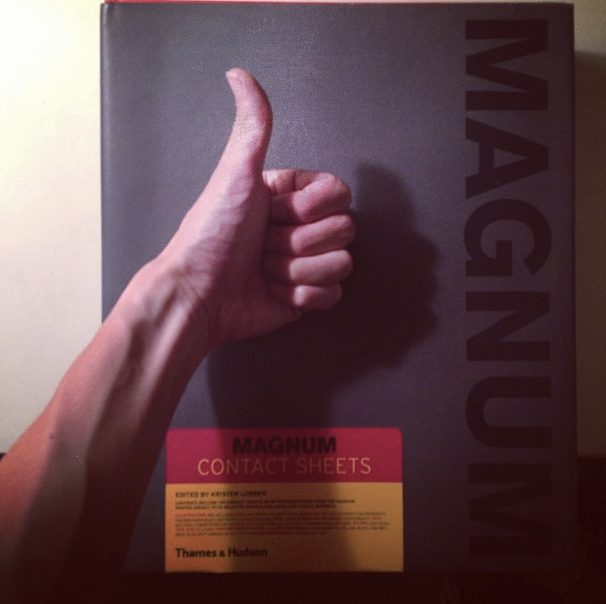
On The Importance of Street Photography Books

My favorite photography book, Magnum Contact Sheets. I think one of the best ways to become better in street photography is to look at a lot of great street photography books. Books by the masters. Books by Magnum Photographers.
From the point of this writing, I have been shooting street photography for 7 years. However it wasn’t until around 3 years ago that I started to seriously read photography books.
I had several problems:
-

Capturing Moments of Complete Disorientation: Interview with Mark Powell by Todd Gross

Mark Powell. Belle Isle Detroit, 2007 Eric’s Note: I am excited to share this interview as a collaboration between Todd Gross (Quarlo) and Mark Powell (locaburg). I first discovered Mark Powell’s work through Todd Gross- who has been a big fan. I thought it might be a great idea to have Todd interview Mark – as he knew his work far better than I did. Enjoy the interview and images below!
Todd: I’m pretty sure it was my friend, Eliot Shepard who first tipped me off to Mark Powell’s work on Flickr way back in 2004. I was immediately struck by the unique atmospherics and equally out there cast of characters present in the photos. Although I’m fairly certain Mark could point his camera at a blank wall and the resulting image would still have that “locaburg vibe”, Mark has an eye that’s finely attuned to the odd in-between moment.
I had the good fortune of meeting Mark on a couple of occasions and his personality certainly mirrors his work–vivacious, affable, inquisitive and a touch bent.
-

Street Photography Composition Lesson #3: Diagonals

© Henri Cartier-Bresson / Magnum Photos. ROMANIA. 1975. In a train. For today’s street photography composition lesson, we will discuss a compositional rule that is simple enough: the diagonal. Credit goes to Adam Marelli for teaching me about this important design element which can help street photographers all around the globe.
Diagonals are one of the strongest and most fundamental compositional elements– something that we all know quite well.
There are 3 types of main lines: the horizontal, vertical, and diagonal line. They also go in degrees of intensity (the horizontal line being the least dynamic and the diagonal line as the most dynamic).
-

“American Sequitur”: Interview with Joshua Yospyn by Brian Eden
Eric’s Note: I am excited to share this interview which was conducted by Brian Eden, a street photographer in New York City. He interviewed Joshua Yospyn, a freelance photographer from Washington D.C. about his “American Sequitur” project. Find out more about how Joshua got started and see some more of his photos in the interview below!Â
-

Street Photography Composition Lesson #2: Figure-to-ground

© Josef Koudelka / Magnum Photos / FRANCE. Hauts-de-Seine. Parc de Sceaux. 1987. All photos in this article are copyrighted by their respective photographers.
To continue my street photography composition lessons, I want to now move onto the topic of “figure-to-ground”.
What I learned from Adam Marelli is that one of the most important things in a photo is if it “reads” well. Meaning– if you look at a photo, can you tell what is going on– and see all the subjects clearly?
One of the most important principles is if a photo has strong “figure to ground.” Pretty much what figure-to-ground is having strong contrast between your subject and the background. For example, having a light subject against a dark subject, or a dark subject against a light background.
-

Only 2 Weeks Left to Submit to the Miami Street Photography Festival Contest 2013!

Hey guys, as a reminder– there are only 2 weeks left to submit to the Miami Street Photography Festival Contest 2013! This will be a great opportunity for you to get more exposure for your work! The winner of the contest will be exhibited and win a new Leica X2.
For those of you who can make the festival, there are also some great street photography workshops lead by Magnum photographers Bruce Gilden and Alex Webb / Rebecca Norris Webb. More details on the workshop here.
The Miami Street Photography Festival is also a registered non-profit, so don’t worry– this isn’t just some money-making scheme. They truly do it for the love of street photography! Read more for all the contest details.
More info about the contest and how to submit here.Â
Follow Miami Street Photography Festival
-

Variety is the Spice of Life: Interview with Peter Kool
Eric’s Note: I first noticed the work of Peter Kool on Flickr (and in another interview with Leica Liker) and loved his jolly, whimsical, and fun street photographs. He has a superb eye for details and timing.
Peter was born 1953 in the Netherlands, and moved to Belgium in 1973 to get married. He started to shoot from the birth of his first son, and went to the academy from 1980-1985. He also says, “The life expectancy of a Belgian male is 77 at the moment, so still 17 years of photographing to come.” Read the interview and see his images below.
-
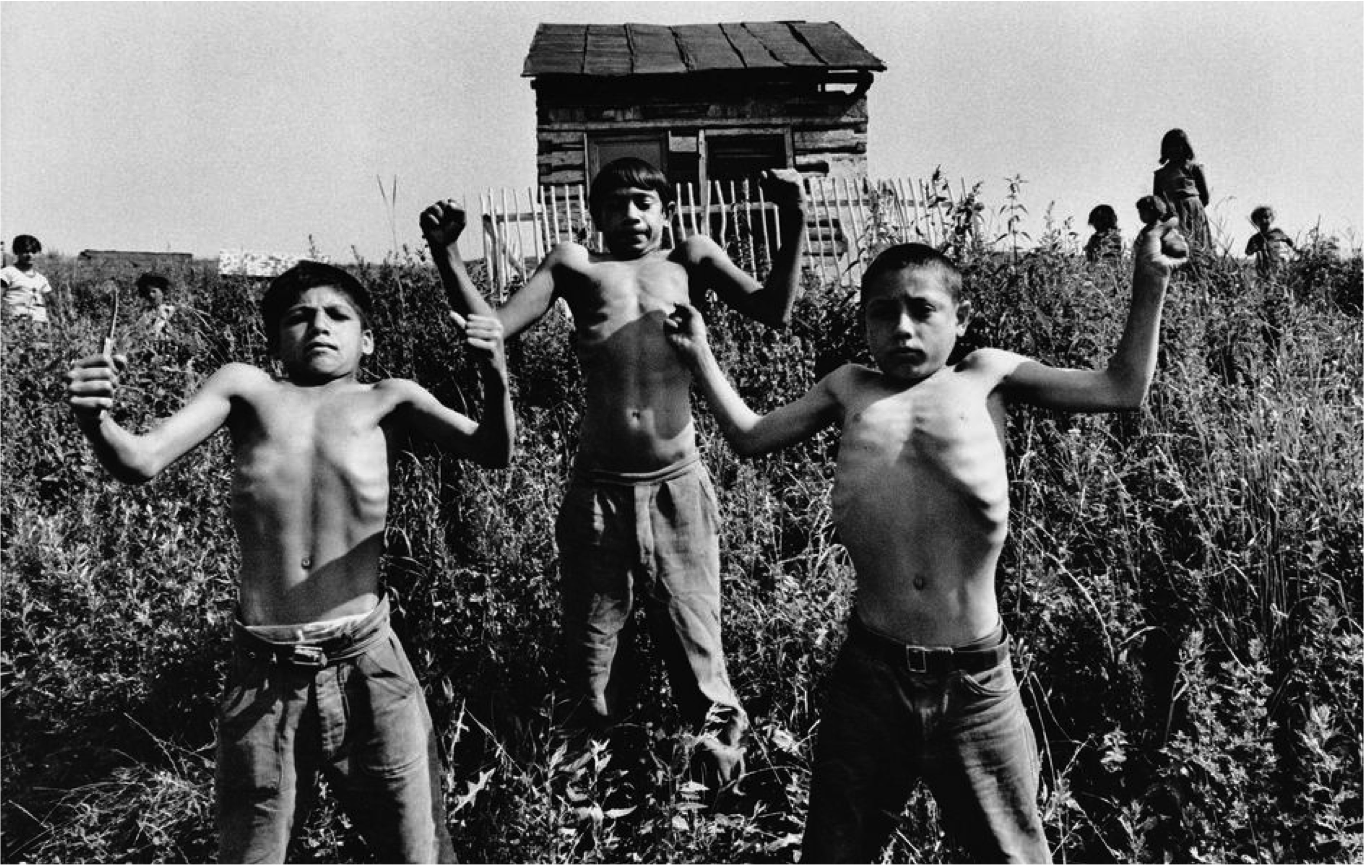
Street Photography Composition Lesson #1: Triangles

© Josef Koudelka / Magnum Photos / CZECHOSLOVAKIA. Slovakia. Zehra. 1967. Gypsies. All photos in this article copyrighted by their respective photographers.
One of the things I don’t talk much about is composition on my blog when it comes to street photography. To be quite honest, I am not as interested in composition of photographers when it comes to their philosophies when it comes to photography. However it is still something important to consider. Therefore I want to start a series inspired by Adam Marelli on how you can improve your compositions in street photography. Some of these lessons may be new, others familiar– and I will use the best examples in the history of street photography to illustrate the compositional techniques (while throwing in a few of my own).
Triangles are one of the best compositional techniques you can use in your street photography to fill your frame, add balance, and add movement in your images. (Thanks also to Patrick Bryan for the inspiration for doing this article).
-
On the Streets of San Francisco with Jack Simon
I recently had the pleasure of shooting on the streets of San Francisco with Jack Simon, a well-known street photographer in the community for this month’s fiestamovement mission. I followed Jack around the streets of San Francisco, seeing how he worked the streets, his philosophies on street photography, while listening to his tips and learned a ton from him.
I also have an hour-long interview that I am in the middle of transcribing that will be live on the blog soon as well. Stay tuned!
-
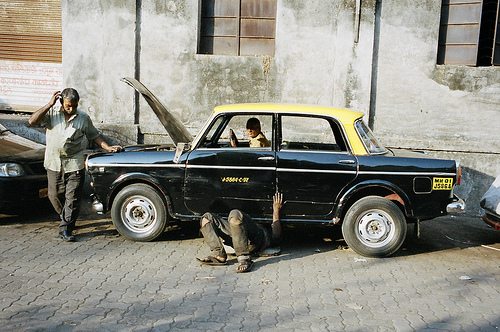
Announcing Street Photography Workshops in Stockholm and London (and Online Workshops!)

My talented (and beautiful) girlfriend Cindy is going to Umea, Sweden for a conference which gives me a excuse to visit Europe! Therefore I am excited to share that I am teaching my popular “Introduction to Street Photography Workshop” in Stockholm (in association with CUP Stockholm) and London this December. I know it is a bit chilly in December, but this workshop will give you an excuse to get out of your house, push yourself out of your comfort zone, and meet other passionate street photographers.
For those of you who cannot attend an in-person workshop, I am excited to announce my Personal 1:1 Online Street Photography Workshops! This is a great opportunity if prefer the flexibility and convenience of improving your street photography from the comfort own home.
I also still have a few spots for my upcoming workshops in San Francisco and Los Angeles, so don’t miss your chance before it is all filled up! The full schedule of my workshops for the rest of the year is below. I am looking very much forward to having you and assisting you on your personal street photography journey!
October 25-27th
San Francisco – Intermediate/Advanced Street Photography Workshop – FEW SPOTS LEFT!
November 1-3rd
Los Angeles – Introduction to Street Photography Workshop - (featuring Rinzi Ruiz and Dana Barsuhn)
November 8-11th
Los Angeles – Intermediate/Advanced Street Photography Workshop – (featuring Rinzi Ruiz)
December 6-8th
Stockholm – Introduction to Street Photography Workshop – SOLD OUT!
December 13-15th
London – Introduction to Street Photography Workshop – NEW!
For more questions regarding the workshops, student discounts, and returning student discounts, email my manager Neil Ta at Neil.ta@erickimphotography.com
-
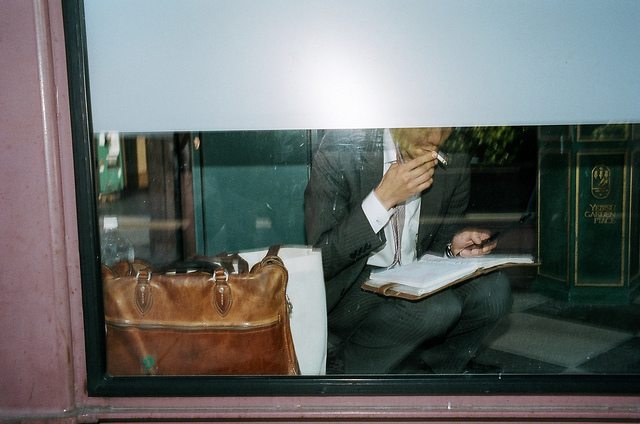
On Legacy and Street Photography

Tokyo, 2012 One day we are all going to die–whether we like it or not.
I have been thinking a lot about death lately– which I know might not necessarily be healthy for a 25-year-old, but still feel that it is something important to consider.
Regarding death, I often think about the legacy I am going to leave behind. How will people remember me? Did I use all my abilities to the fullest? Did I help contribute to society? Will people remember me after I die? How will people remember me after I die? Will I have finished my life’s “task” (whatever it may be?)
-

6 Lessons Eugene Atget Has Taught Me About Street Photography
Eugene Atget has always been sort of an enigma to me. When I started to delve into the history of street photography, a lot of people credited him to being one of the “fathers of street photography.†But when I first looked at his work, I was a bit confused. Most of his photos didn’t have any people in them. His photos were mostly of the architecture of Paris: doorways, arches, door handles, street facades, and the streets themselves.
I always thought that street photography had to include people in it. But Atget was talked about thoroughly in “Bystander: A History of Street Photography†by acclaimed photo historian Colin Westerbeck and by the great Joel Meyerowitz.
Westerbeck further explains the relevance of Eugene Atget by writing the following:
“While stop action images of people are bound to figure prominently in many collection of street photographs, this book also contains many pictures in which there are no people at all. The most salient examples are to be found in the works of Eugene atget. Yet even he was, through implication and inference, trying to show us life onthestreets. Suggesting presence in these midst of absence, he was attempting to reveal the character of the street as it inherited in the setting itself. Like every other practitioner of this genre, he wandered the streets with his camera, looking for what would they be called photo opportunities. More important, he’d was also like every other street photographer in his readiness to respond to errant details, chance juxtapositions, odd non sequiturs, peculiarities of scale, the quirkiness of life on the streets.â€
Did Atget even consider himself a street photographer? Certainly not. In no records of him did he ever call himself a street photographer (the term was coined centuries after he even took photos). Not only that, but Atget saw himself as a “collector of documents†rather than being an artistic photographer.
-
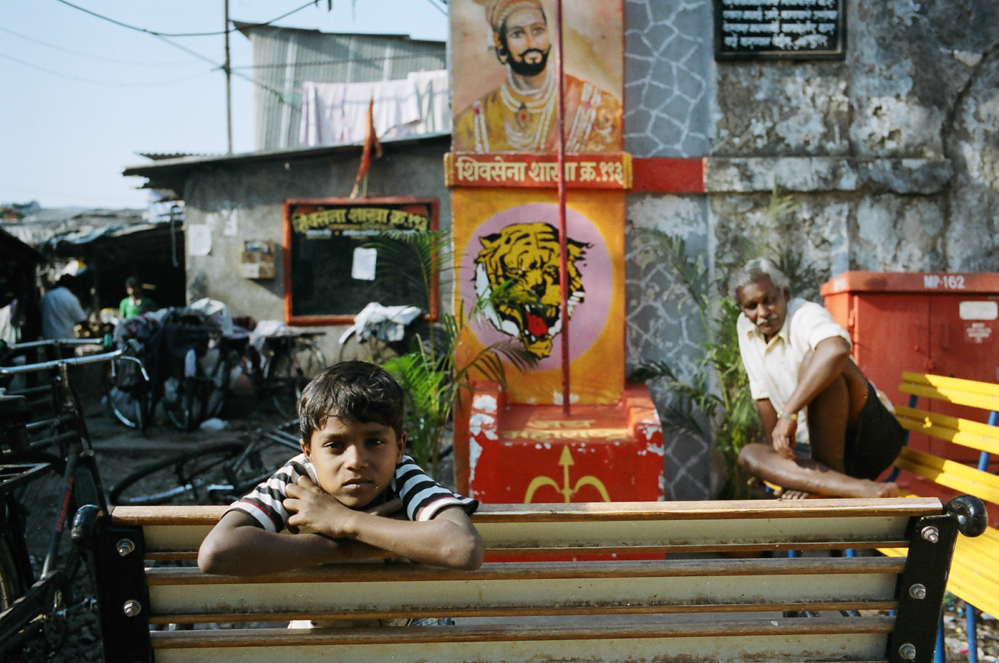
103 Things I’ve Learned About Street Photography

NYC, 2013 This article was originally posted on Digital Photography School.
Over the years, I have learned a lot of lessons about street photography. Below is a compilation of some quotes, thoughts, and philosophies which have influenced me and my street photography. None of my ideas are original – some are based on personal experiences and others are based on ideas I heard from books, lectures, and on the internet. And of course, this is not a definitive list of what you “have to do” in street photography – rather it is some of my personal thoughts:
-

On Jealousy and Street Photography

Downtown LA, 2014 The other night before I went to sleep, I was reading a book on my iPad and then wanted to post an inspirational quote onto Facebook. So I logged into Facebook, shared the quote– and suddenly got sucked into the news feed. I started scrolling through the activity of all my friends– and started to feel pretty down. It seemed that all the other photographers I follow online are doing things much more exciting than me: they are traveling to places I have always wanted to, are doing big exhibitions, publishing photography books of their own, and doing interviews for big-shot media companies.
As I kept scrolling through my news feed and clicking around– I started to feel sick in my stomach. What am I doing here sitting on my ass here in Berkeley– and not achieving as much as these other people? After all, I work hard in my photography, in my blog, making connections, and all that jazz.
I then caught myself: I was being jealous. Jealous of the success of other photographers– and not being satisfied with what I had.
-
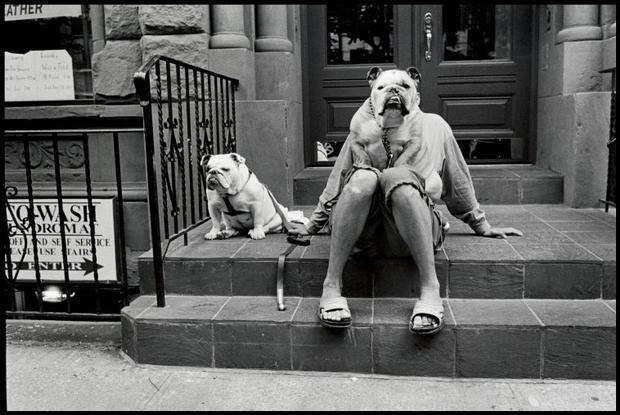
14 Lessons Elliott Erwitt Has Taught Me About Street Photography

USA. New York. 2000. © Elliott Erwitt / Magnum Photos If you are not familiar with the work of Elliott Erwitt, you have definitely seen many of Elliott Erwitt’s iconic work all around the globe. As one of the original Magnum members and former president, he has one of the longest spanning photography careers- spanning over 50 years.
What I most appreciate about Elliott Erwitt is his wry sense of humor when looking at the world– as well as his straightforward and nonsensical philosophies about photography. When sharing his thoughts and advice, I think he is one of the most practical and helpful- especially based on his decades of experience.
I share some things I personally have learned from him in the article below.
-
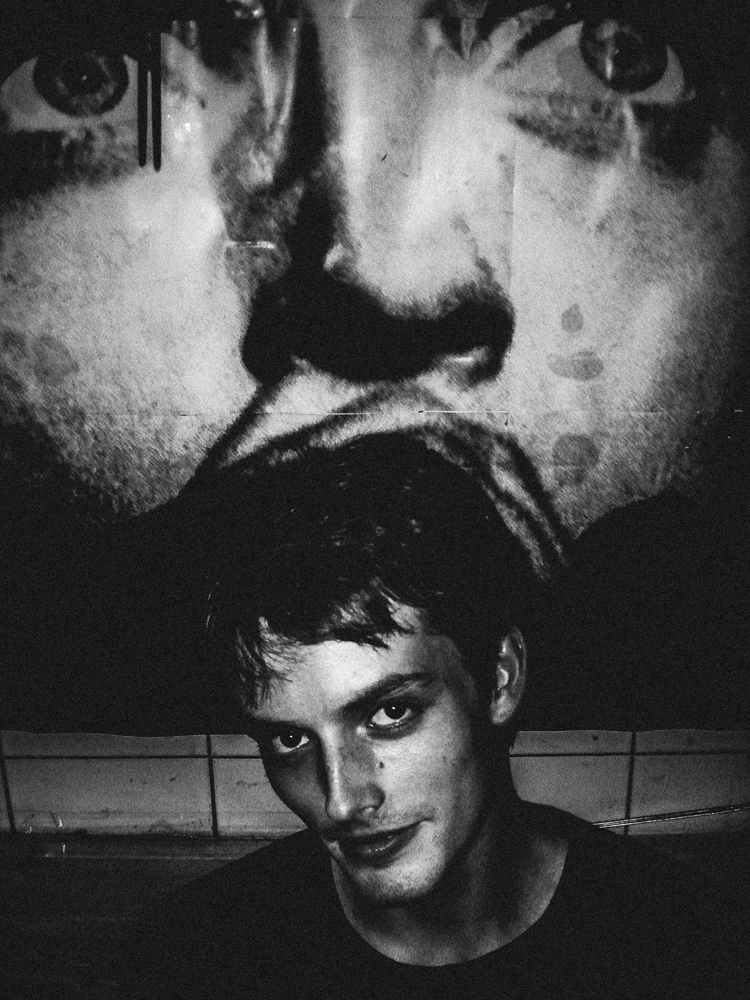
“Access”: 5 Tips When Working on Photography Projects

c. Jt White Eric’s Note: This article is by Josh White, a street photographer based in Korea. You can also see my interview with him here.
Josh: One of the hardest things to do in the documentary style of photography is to work on a project. There are many reasons for this, not the least of which is just deciding on a theme or subject. Of course, that is just the start! In this post, I’ll talk about my philosophy on the subject of photographic projects and how you might start one for yourself.
-
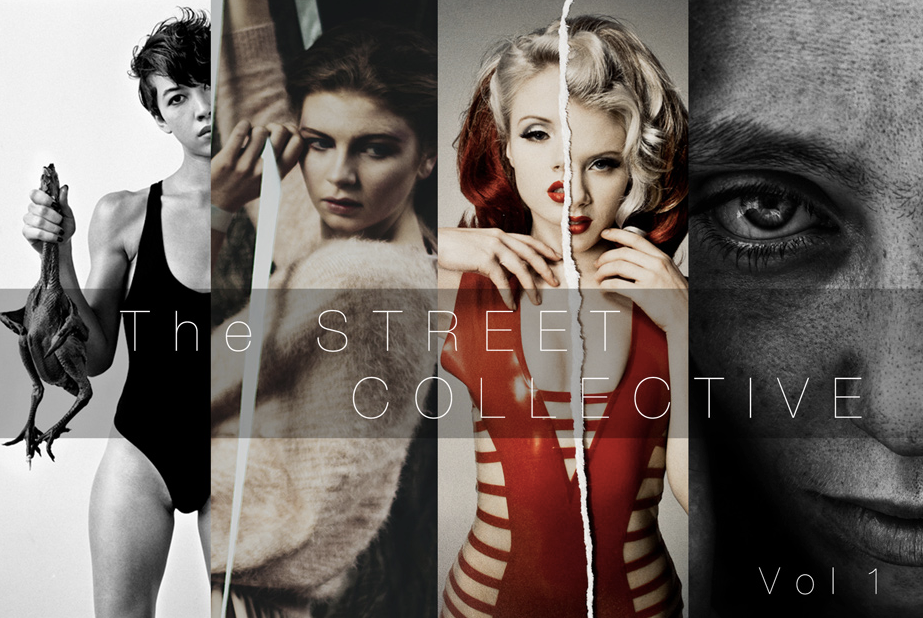
Download Your Free Issue of “The Street Collective Vol. 1”

The folks at PhotoWhoa has recently put together their first issue of “The Street Collective: Volume 1“. Â Below is a description of the magazine from the editors there:
We collected the insights of these photographers to help you. Photographers like World Press Photo award winning Laura Pannack, LPV magazine founder and street photographer advocate Bryan Formhals, critically adored Kazuo Sumida, and PDN noted up-and-comer Delphine Diaw Diallo.
In all, we’ve collected 10 different photographers that will teach their own perspective about documenting real life. You’ll learn to how to work with natural light with Odd Future’s own Julian Berman. Find out how to communicate through cityscapes and ordinary moments with Satoki Nagata. And discover how to turn your street portraits into works of art with Lee Jefferies.
The magazine looks superb, with some great and talented street photographers on it. Make sure to download your copy for free here.
-

Review of the Leica D-Lux 6 for Street Photography
About two months ago (before I was going to embark on my Michigan to LA road trip), Chris Moore and Shirley DeSilva from the marketing division of Leica lent me a Leica D-Lux 6 to test out on the streets (thanks guys!).
I have always been a huge fan of compact cameras– for their weight, size, and easily portability. I think at the end of the day, I prefer having smaller cameras for street photography– as I generally end up carrying them with me everywhere I go (whereas my bigger cameras of the past tended to stay home and collect dust).
So how is the Leica D-Lux 6 for street photography? Read on to see my thoughts.
-

Observe Collective Interview #2: Chris Farling
Eric’s Note: ​OBSERVE is a new international photography collective focused primarily on the practice of candid street photography. I have sent questionnaires to all 14 of the members, and will feature their responses and images on the blog for the next upcoming weeks. Â
Chris Farling: To me, street photography has more in common with other improvisational arts than it does with other types of photography. As such, it is as much about enjoying the process and working at it as it is about the final results, with near-misses sometimes being more interesting than their more polished counterparts. Ultimately, I see street photography—despite its occasional rude manners—as an honest way of actively living in the world.
-
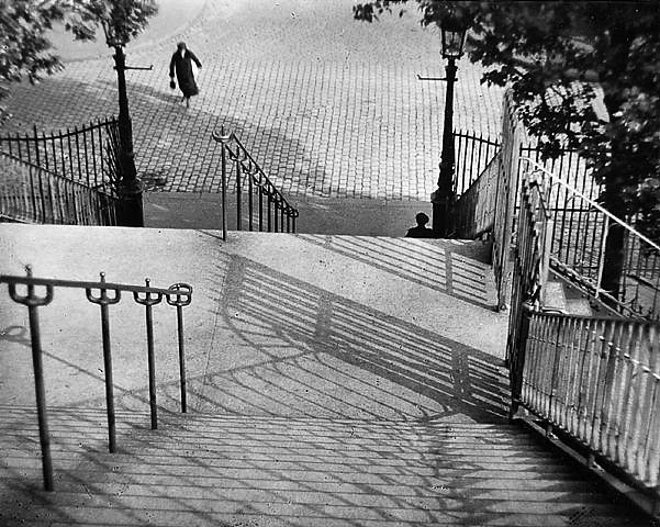
10 Lessons Andre Kertesz Has Taught Me About Street Photography

© Estate of André Kertész All photos copyrighted by the estate of Andre Kertesz. Also many thanks to Michael Meinhardt for helping me edit this text.Â
Andre Kertesz is one of the greatest photographers who ever lived. He photographed extensively for over 70 years, which also makes him one of the most prolific photographers. Not only did he help pioneer the genre of street photography, he also had a strong impact on an entire generation of photographers – even including the great Henri Cartier-Bresson.
When asked about Kertesz, Henri Cartier-Bresson showed his reverence by saying: “We all owe something to Kertesz.” and even “Whatever we have done, Kertesz did first.”
Another famous photographer, Brassai, beautifully captured what made Kertesz so great as a photographer:
“André Kertész has two qualities that are essential for a great photographer: an insatiable curiosity about the world, about people, and about life, and a precise sense of form.” – Brassai
Every street photographer with a desire to learn more about the masters needs to know about Kertesz. I have personally gained a great deal of inspiration from him and will share some insights I have gained from him:
-
Small is Beautiful: Review of the ONA Bowery Bag
Christine from ONA was generous enough to give me the Bowery Bag to test out and review during some of my travels the last few months. I put it through the rounds, and find it to be an ideal situation for street photographers who want a smaller bag to hold their Fuji, Leica, Micro 4/3rds, Compact, or small DSLR. Check out my review above!
-
Streettogs Critique Group Feedback #1
I just gave some members in the Streettogs Critique Group some feedback and made this screencast – thanks to Michael Meinhardt for organizing the images together! I hope to do more of these in the future!
If you want to get some more critique and feedback, join the group and the rule is: for every photo you post to the group, you must leave at least 3 critiques to the photos before yours (at least 4 sentences long). Looking forward to having you!
-
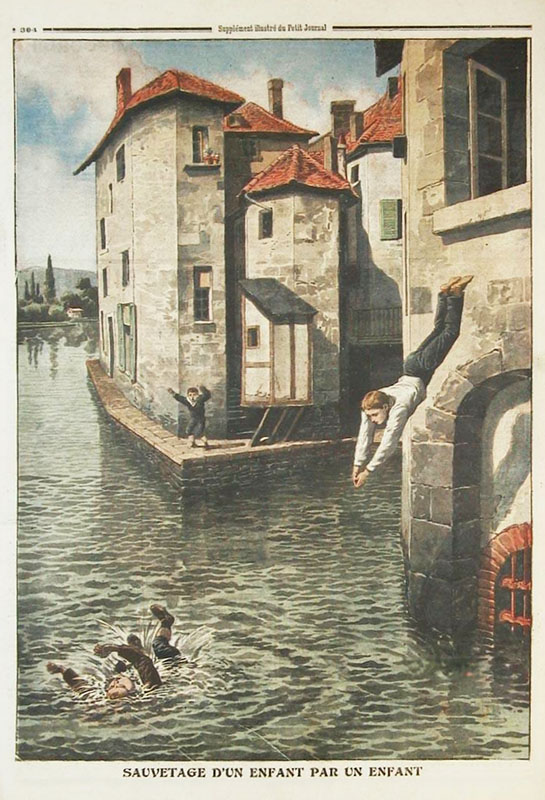
What Do You Have To Say and How Would You Say It?

Sauvetage dun enfant par un enfant (Le Petit Journal) Eric’s Note: This guest article is by Dan K, a British Camera collector and photography enthusiast based in Hong Kong.
Many of the great photographers whose wisdom we like to quote are successful because they have an innate artistic sensibility. For the rest of us, it is harder to grasp what makes a compelling photo.
I recently attended the gallery of one of Hong Kong’s most famous photographers. Michael Wolf made a name for himself creating images of high visual impact with a subtly dark twist of voyeurism. His own work is compelling, yet his longest wall is filled with countless rows of historical illustrations of Le Petit Journal. These lithographs portrayed the events of the day, in a highly dramatised style.
-
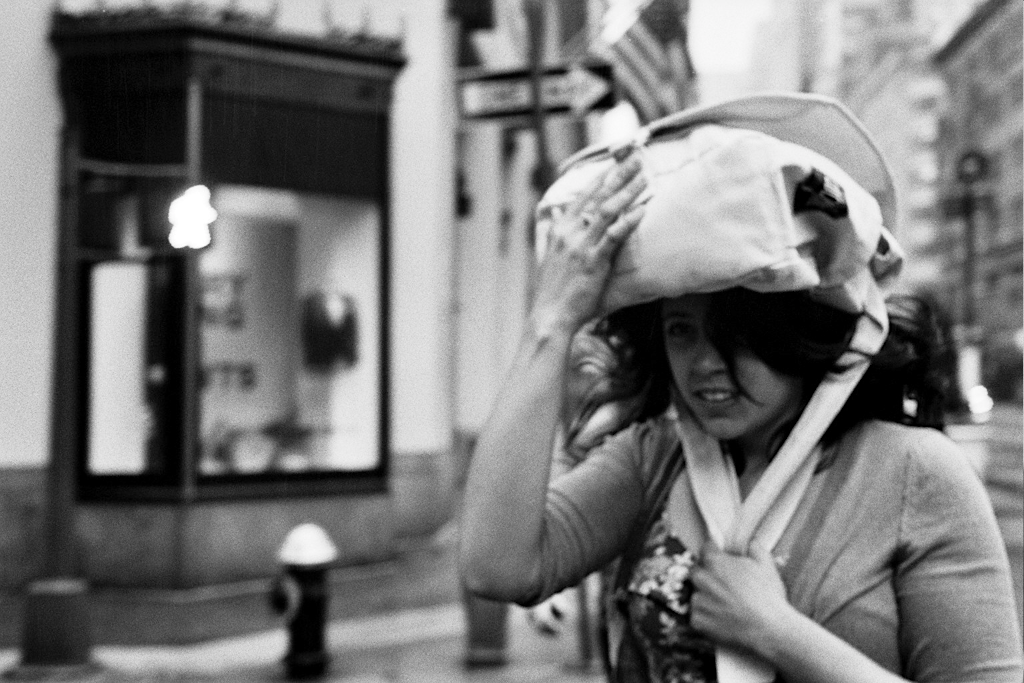
Interview with Todd Breslow: Developer for the free “Develop!” iPhone App

Screenshot of the free “Develop!” iPhone Application Eric’s Note: I am excited to share this interview with Todd Breslow, a street photographer and the developer of the free “Develop!” iPhone App — which helps you process your own black and white film. He loves street photography with his Leica M3 and working in analog, and lives in Philadelphia with his spouse, two sons, and two cats. When not developing film he can be found tending to his beehives or taking a bike ride. Todd works in the Automotive industry.
Check out my interview with him on how/why he made the application for the community!
-
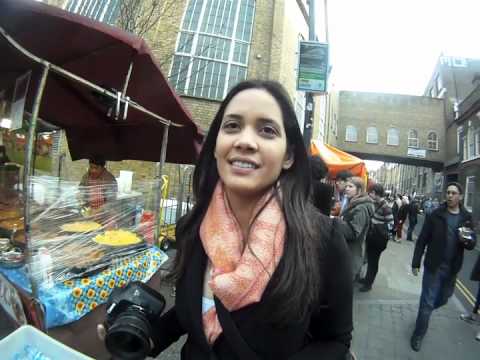
“Discover Your Unique Voice in Street Photographyâ€: San Francisco 3-day Intermediate/Advanced Street Photography Workshop (10/25-10/27)

STUCK IN A CREATIVE RUT AND LOOKING FOR INSPIRATION TO TAKE YOUR STREET PHOTOGRAPHY TO THE NEXT LEVEL IN THE STREETS OF SAN FRANCISCO?
Do you feel that when you look at your street photographs, you have a hard time defining your style? Do you dream of creating unique and eye-popping images that stand out from the crowd? Do you want to find that signature style that you can put your stamp on and be proud to share with the world?
If so, I am excited to invite you to my upcoming 3-day Intermediate/Advanced Street Photography Workshop in San Francisco October 25-27th.
This unique workshop will give you the opportunity to hone your street photography voice, vision, and style while giving you the skills, knowledge, and confidence to take your street photography to the next level.
-

Street Photography is What Keeps Me Sane: Jerry Pena from New York
Eric’s note: Earlier this year in NYC I bumped into Jerry Pena, a street photographer living in upstate NY. Funny story, he took a street photograph of me, and then I ran after him (not to beat him up) but to just chat. We shot a bit together, chatted about street photography, and I saw some of his color film work – and loved his refreshing style and aesthetic. See more of his color street photos below.
Jerry: My name is Jerry Pena and I’m a 27 year old construction worker living in upstate NY. I have a lot of time off in between jobs and street photography is what keeps me sane. I have always noticed the strange characters and interesting moments that happen on the streets of NYC and always wondered how I could captured them.
-
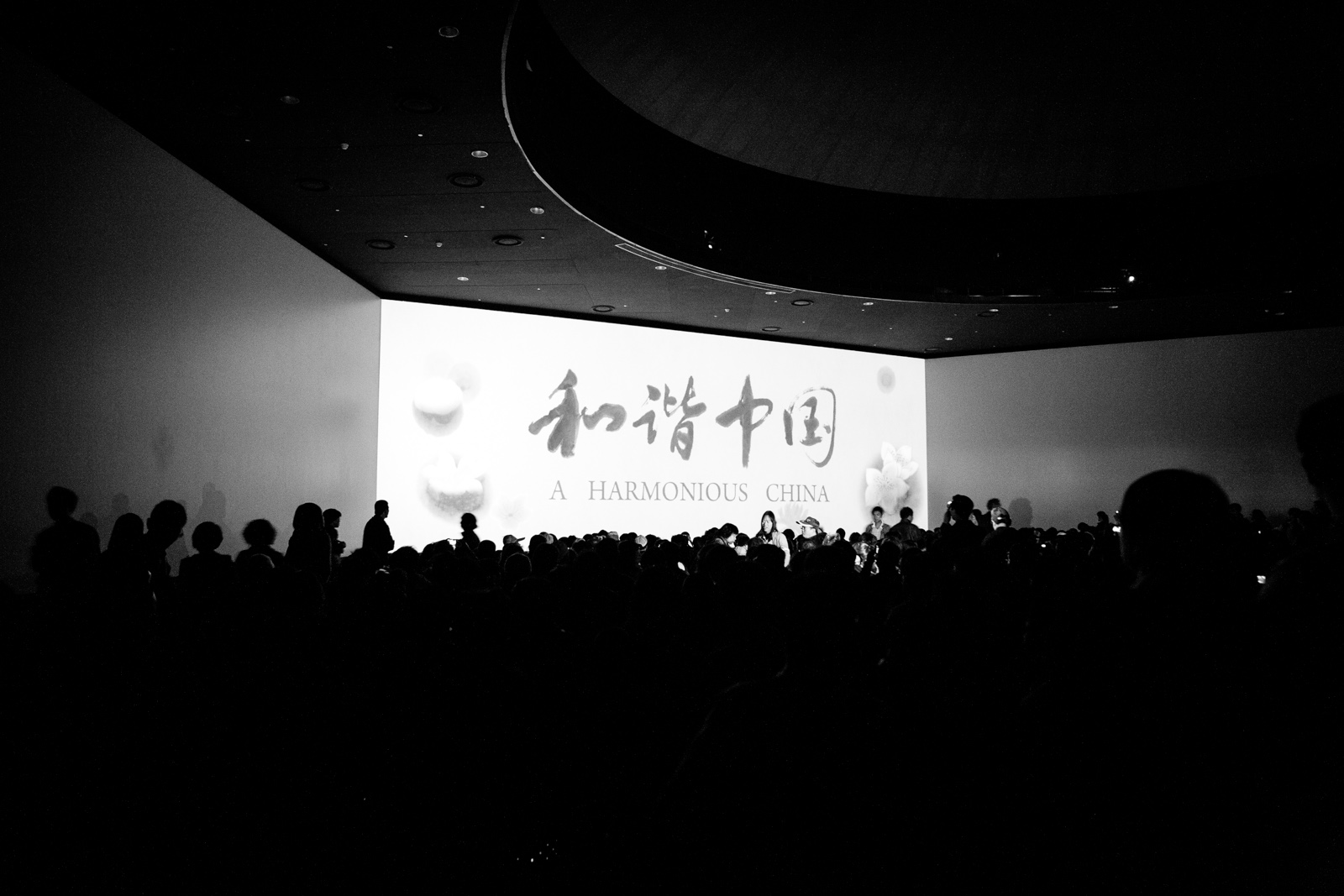
Removing Myself from My Own Photos: What I Learned While Editing and Sequencing My “Harmonious China” Project

“Harmonious China” by Neil Ta Eric: This is a guest article by Neil Ta, my homie and babysitter. In this article he shares his new project, “Harmonious China” and his thoughts about the editing process.
Neil: My good friend and International Street Photographer, Eric Kim, first introduced me to the idea of letting photos marinate. The concept is really simple. When we take photos, there is an emotional attachment or bond that reminds us how amazing we felt when we took the image. Photographers who select and post their photos immediately are often times at a disadvantage because they let their emotions at the time of taking the photograph get in the way of their better judgement. To combat this, Eric has recommended to photographers to let their images marinate. As time passes and we revisit our images, we lose that emotional bond that had initially formed and we’re better able to objectively look at our images without biases.
So why the long-winded introduction to my new project, Harmonious China? Taking Eric’s advice, I recently decided to look at my archive of images that I shot in China back in April 2011. I hadn’t looked at these images in a very long time and secretly I was hoping that (by some act of god) I was able to pull something out of there that I had previously missed.
When I began to review the images, so much time had passed that they were fresh to my eyes, Surprisingly, I was able to pull out a number of images that fit into a centralized idea. Because I let the images marinate for so long, there were a number of shots that I forgot I took or had no immediate recollection of where it was taken.
